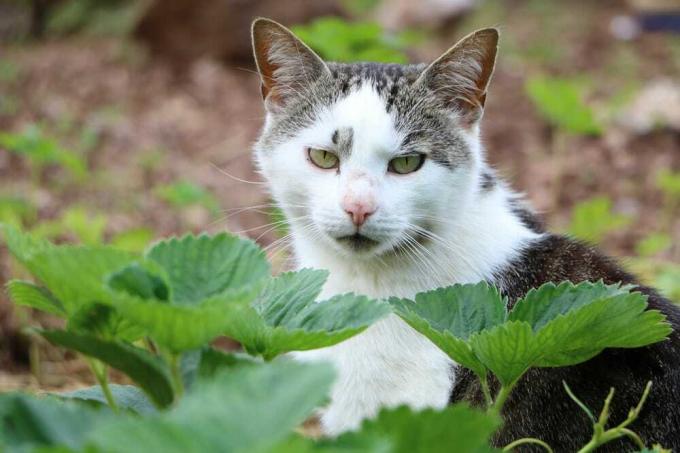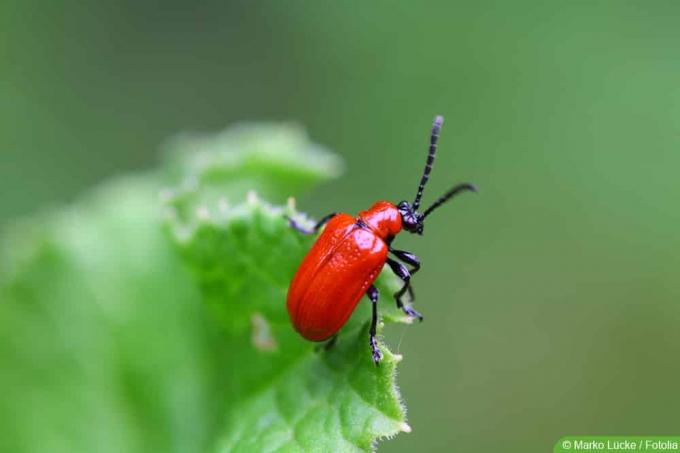

Table of contents
- detect vole
- The first steps
- The right time
- Drive away with smell
- Drive away with noise
- Natural enemies
- Use live trap
- Prevention through root protection
- Conclusion
If a vole shows up in your own garden, it can quickly become a nuisance. Because if there is enough food for them, they quickly settle down. All bulb flowers such as tulips or daffodils belong to the preferred food of vegetarians. But roots or bark of trees, useful plants and attractive roses are also part of their preferred food. So if a vole has made itself comfortable in the garden, it should be driven away quickly. There are a few ways and means to do this that do not require poison.
detect vole
If more mounds form in the garden, then this can either be the protected mole or a vole. However, the mounds of voles differ from molehills in that they have an exit on the side. The pest itself is about 10 to 20 cm long and has black, reddish-brown or brown-grey fur. Light to medium-heavy garden soil is the ideal environment for voles.
The first steps
The first thing to do after vole mounds have been identified in the garden is to inspect them to see if they are still inhabited. This can be determined with the help of the so-called Verwuhlprobe. Vole Grass can be used to locate the underground passages. This is lit and develops a strong smoke. According to the trade, the animals are already to be expelled from this. The side effect, however, is that wherever the tunnels run underground, smoke comes out of the ground. Then proceed as follows:
- Passages go underground from the hills
- expose them to a length of about 30 cm
- if they are still inhabited fill them up again
- at the same time, a live trap can also be used directly here
- fill in or destroy the entrance from the hill
- if there is an inhabited hill, the vole will quickly build it up again
The right time
Of course, voles can be repelled all year round, but the best time to do this is from autumn through winter to spring. Because in these months the animal finds less food, but it does not hibernate and is still active. During this time, baits that can be laid out are also readily accepted. But of course all measures taken to drive away the voles without using poison can also be carried out in the summer months.
Tip:
Anything that is touched for the voles to capture should not be tainted with the human scent. It is therefore advisable to wear rubber gloves when setting the baits or setting the live traps.
Drive away with smell

The pests have a very sensitive nose and some smells they even detest. The human smell or the smell of pets, such as dogs or cats, can drive voles away. And some plants also give off a smell that the little animals don't like at all. Therefore, when driving away by smell, the following procedure should be followed:
- use human and animal hair
- put them in bunches in the entrance of the hill
- Open the tunnel from above and also add tufts of hair
- at the same time leaves or branches of plants also help
- Use pieces of spruce, walnut or camphor for this
- Manure made from elderberry, nettles or spruce
- pour this mixture directly into the aisles
- Put fish waste in the aisles
- the animals also don't like the smell of beer
- therefore, empty beer bottles placed in the aisles help
Tip:
Some of the smells are also unpleasant for humans. These should therefore not be used near a seat or the house.
Drive away with noise
Voles like it quiet in their environment. Therefore, a garden with children playing frequently is often not visited at all. If there are no children in the family who can make noise, then the garden owner must take matters into his own hands. Stomping in the garden longer every day can scare off the little animals. If you don't have the time or desire to do this, you can also use other sources of noise:
- a mechanical alarm clock is effective
- this is placed in a plastic bag in one of the aisles
- multiple iron bars rammed into the ground are just as effective
- here several times a day with a hammer
- alternatively, the trade offers the mole or vole deterrent
- these emit high-pitched sounds that hurt the animals' ears
- use according to dealer instructions
Natural enemies

If the voles are up to mischief in a garden in the country, natural enemies are already present there. Birds of prey tend to make their rounds in the sky outside of the big cities in search of food. In order to lure these birds into your own garden, it makes sense to offer them a place, for example in the form of a perch. Other natural enemies are:
- weasel
- ermine
- cats
- erecting a pile of wood will attract weasels
Tip:
Of course, the predators are usually not found in the city. However, if you have a cat as a pet, you should consider letting it into the garden as a vole in the event of a vole infestation. Even free-roaming cats from the neighborhood can be lured into your own garden with a daily small amount of food.
Use live trap
The live trap is a good way of catching the little pests and releasing them far away. Unlike the expelled voles, which are still around and may return, the captured and released animals are once and for all connected from one's own garden. However, great care is required for the live trap so that no human odor sticks to it. In such a case, the animals will not come close and the bait will not be able to block them either. Therefore, rubber gloves should be worn from the start. The trap and the bait must not come into contact with the arms or other parts of the body. Otherwise, the following must be observed when laying out the trap:
- usually it is a tube
- is available in well stocked shops
- two of these are used in one aisle
- at each exit hole at the end of the corridor
- so the mouse will always fall into the trap, no matter which side it comes from
- fill the live trap with carrots, pieces of apple or similar beforehand
- rub the trap well with earth despite wearing gloves
- close the passage again
- no light should enter
- check after an hour whether the vole has been caught
- if so, put in a cage
- as soon as possible, far away from your own garden in the forest
- Proceed with robust gloves, voles could bite
Tip:
Since moles must not be caught, although their mounds look very similar to those of voles, the live trap is a good option if it is not possible to identify exactly which animal it is acts. In this way, accidentally caught moles can simply be released again.
Prevention through root protection
Prevention can already be taken when designing the garden or laying out a new bed and barriers can be built into the ground to prevent pests. This makes sense, especially if the gardens in the neighborhood are frequently infested with voles. To do this, proceed as follows:
- directly when planting vegetables, fruit trees or flowers
- to do this, place wire mesh around the roots
- so the voles can no longer reach and damage them
- for trees, wrap a wire mesh around the trunk near the ground
- Voles also feed on the bark of trees
Tip:
Of course, if a wire mesh is to be wrapped around the trunk of the trees at ground level, this can be done at any time, and not just when they are newly planted. The existing tree population can also be protected in this way.
Conclusion
There are many things that can drive voles out of the garden, but this is one way there is always the danger that they will only migrate to the neighbor's garden and later to their own garden again appear. However, if they are caught alive and released again far away in a forest, this danger no longer exists. And the natural enemies of small vegetable rodents are also a good choice here to protect your own garden from voles in the long term.
 garden editorial
garden editorial I write about everything that interests me in my garden.
Learn more about plant pests

White spots on leaves: what to do?
Whether in the home or in the garden, white spots on the leaves of your favorite plants are always a cause for concern. However, the causes can often be eliminated quickly. This guide summarizes the most common triggers and gives tips for quick help.

Cherry laurel has yellow eaten leaves: what to do?
Despite the robust nature of Prunus laurocerasus, it is occasionally attacked by pests and fungi. An infestation can be recognized by feeding damage and the discoloration of the leaves to yellow. You can find out how to combat and prevent the accumulation here.

Fighting grubs | Protect raised bed & lawn
Larvae of various species of beetles, grubs, can do a lot of damage in the garden. They live in the ground for several years and prefer to feed on roots. We present effective methods to combat the voracious pest or to effectively prevent an infestation.

Worms in cherries - 8 tips against maggots in cherries?
Worms in sweet cherries can spoil your appetite. It is a major nuisance when the entire cherry crop is affected. With these tricks you can contain the pest infestation and ensure that the insects do not multiply any further.

Fighting lily beetle - 11 effective home remedies
Lilies in the garden are beautiful to look at. There are the greatest types and varieties, all of which somehow have something special. Lily lovers can draw from the abundance of offers and look forward to the floral splendor. Lilies are actually quite hardy. There are few diseases and pests that can cause damage. However, the lily chicken can spoil the splendor.

Combating fungal infestation on trees: how to remove tree fungi
A tree fungus does not appear threatening, sometimes it is even interesting to look at. But that is deceptive. What we see is only the fruiting body, the mycelium is deep in the wood and destroys it slowly but purposefully. Eventually it kills the strongest tree.



